Key takeaways
- Despite its benefits, OpenStreetMap’s inconsistent data quality creates challenges for enterprise business applications.
- OSM alternatives span different categories: database providers, visualization tools, and development frameworks.
- Commercial solutions offer standardized formats and dedicated support versus community-driven alternatives.
- Key selection factors include data accuracy, licensing terms, delivery models, and implementation costs.
Introduction
OpenStreetMap (OSM) is a free, open-source mapping platform that allows users to edit and contribute geographic data. Its collaborative nature has resulted a large dataset of roads, buildings, and points of interest.
“The community is everything in OpenStreetMap, because they’re the ones that create the data,” Steve Coast, Founder of OSM
OSM is widely used for routing, navigation, geocoding, and spatial analysis across mobility, real estate, and retail sectors. Its open and rich geographic data powers applications like ride-hailing, site selection, and offline travel maps, offering a cost-effective alternative to proprietary map services.
While OSM provides valuable resources, its data quality and granularity vary significantly by location, leading many organizations that typically require consistent data quality, standardized formats, and customer support, to explore alternative solutions.
Additionally, the level of detail can be astounding, from individual trees and trash bins to fire assembly points, which makes it sometimes more complicated to use for business applications.
Given the diverse range of mapping use cases, from geocoding and routing to spatial analysis and visualization, there are numerous alternatives to OpenStreetMap, spanning various categories. Among them are database providers, mapping tools, and development frameworks.
While we can’t cover every solution available, let’s explore some of the leading alternatives across various categories that can help overcome these challenges.
💡 GeoPostcodes delivers enterprise-grade location data sourced from over 1,500 official sources across 247 countries. Our standardized postal code databases eliminate data verification overhead and provide the reliability your business operations demand. Browse GeoPostcodes datasets and download a free sample here.
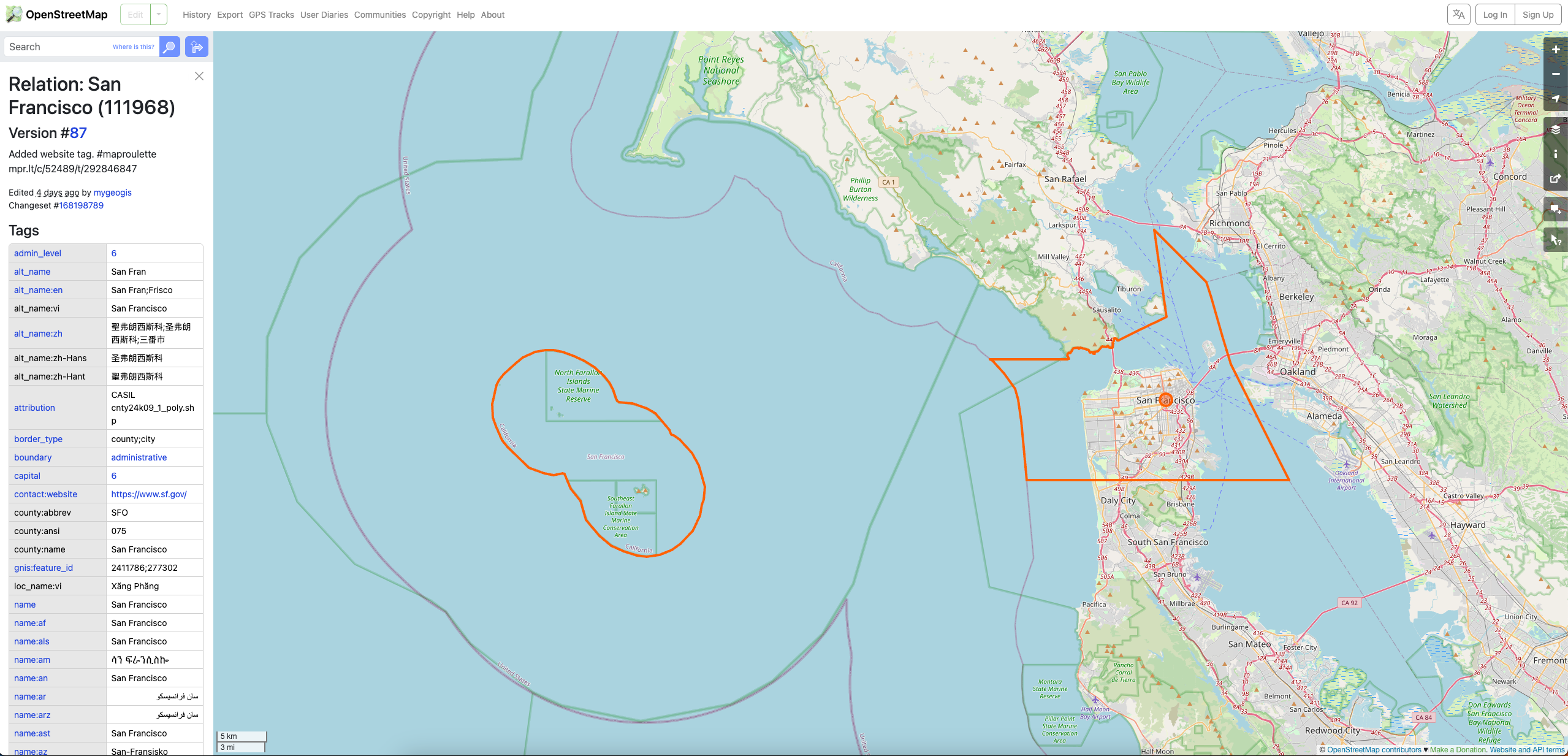
Alternatives to OpenStreetMap
Commercial Options
GeoPostcodes: GeoPostcodes offers standardized and verified location data, including geocoded zip codes, cities, and addresses, making it a valuable resource for global address validation, high-accuracy geocoding, logistics, supply chain optimization, and master data management. Their zip code and administrative boundaries can be used for market analysis, territory planning, or catastrophe modelling.
It offers a unified global structure with data from over 1,500 official sources and coverage of 247 countries, including complex countries such as China, Russia, and Brazil.
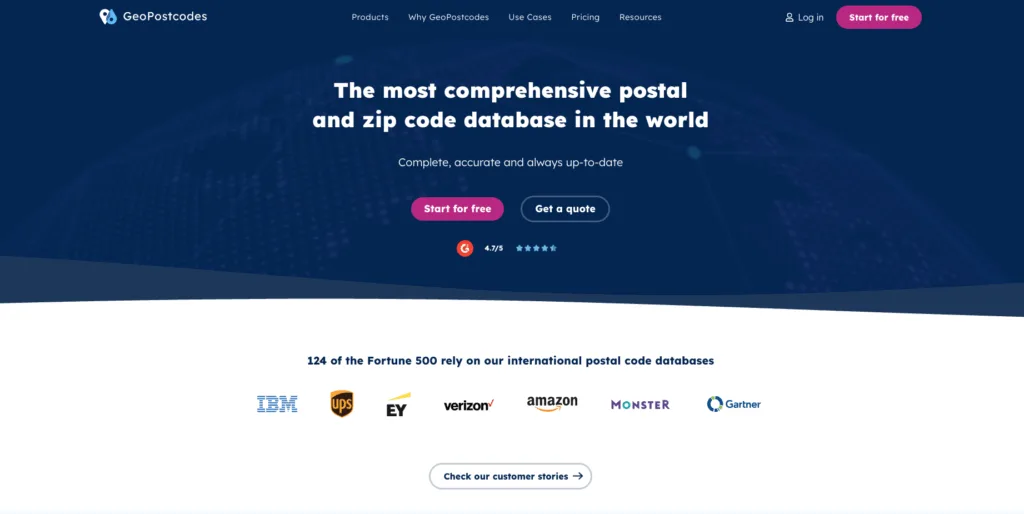
Mapbox: Mapbox is a dynamic mapping platform that offers developers extensive tools to create custom, interactive maps and location-based applications, mainly for automakers. It is renowned for its powerful APIs and SDKs, which enable deep customization and seamless integration into mobile and web applications.
However, its pricing can be complex and potentially expensive for high-volume usage, and some users report occasional inconsistencies in boundary accuracy, as well as limited customer support.
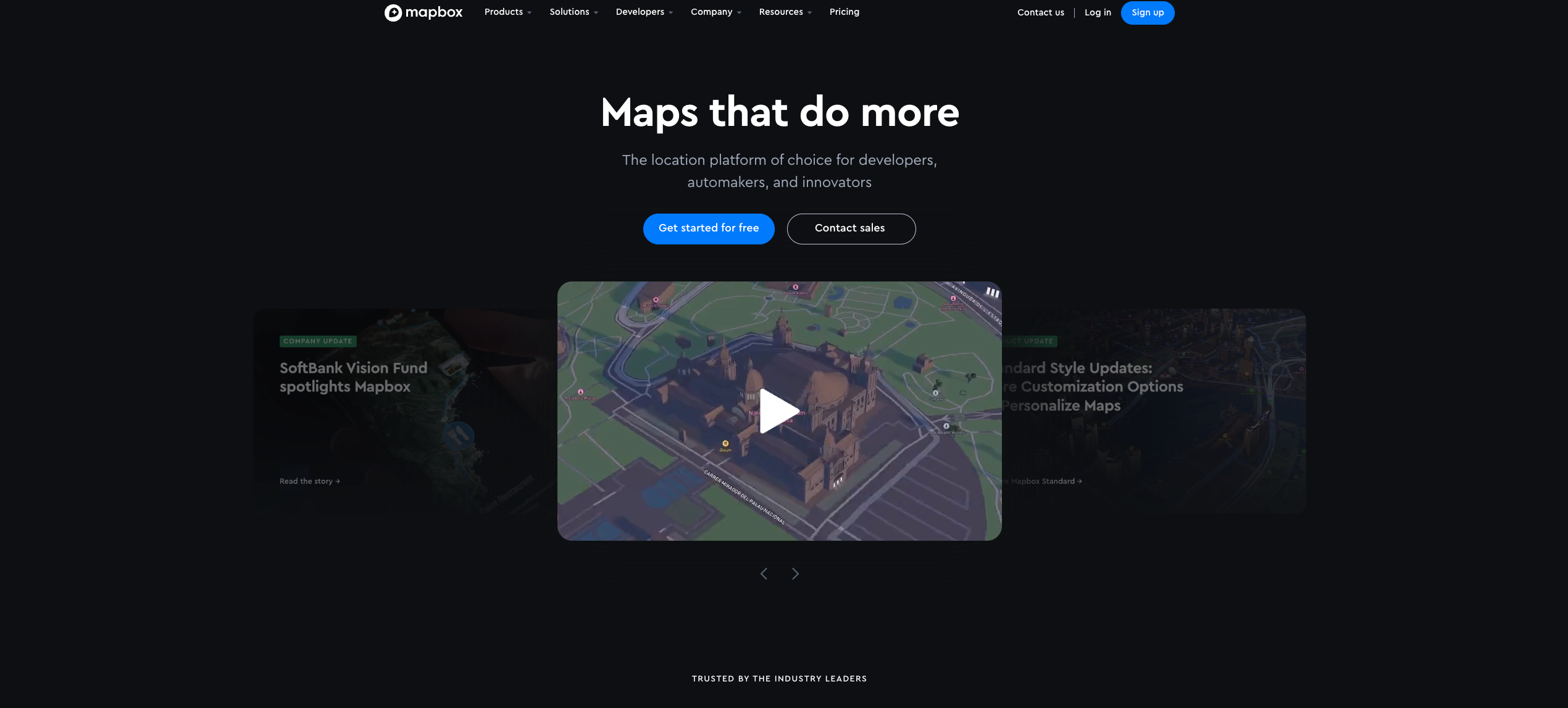
Google Maps Platform: Google Maps Platform is a popular mapping solution offering broad country coverage and extensive features through its APIs. Its API includes address validation, geocoding, reverse geocoding, and place search.
While it offers strong integration with other Google services and cost-effective solutions for low-volume users, it faces challenges related to data accuracy. Notable limitations include coverage restrictions in address validation (only 40 countries available), the risk of false positives in address verification, and relatively high costs for high-volume users.
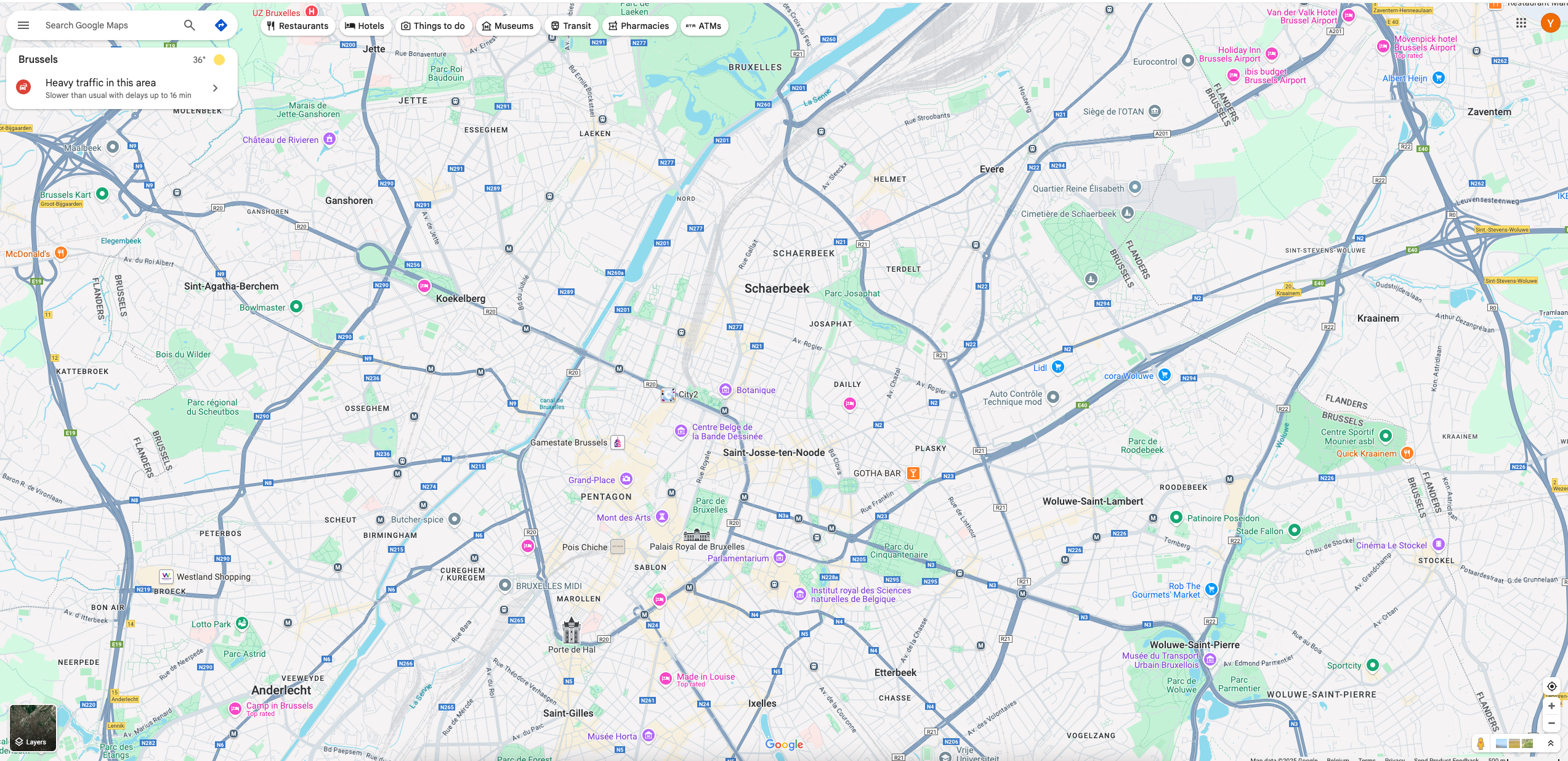
HERE Technologies: HERE is one of the leading providers for automakers. It offers a robust set of mapping and navigation solutions, particularly for applications that require offline maps and advanced navigation capabilities. The platform provides specialized features like truck routing, hazardous materials navigation, and fleet management tools designed for commercial operations.
Their coverage quality can vary significantly depending on the country, and the amount of data they provide can make the integration process complex for your business application, especially when it’s outside of their core navigation product.
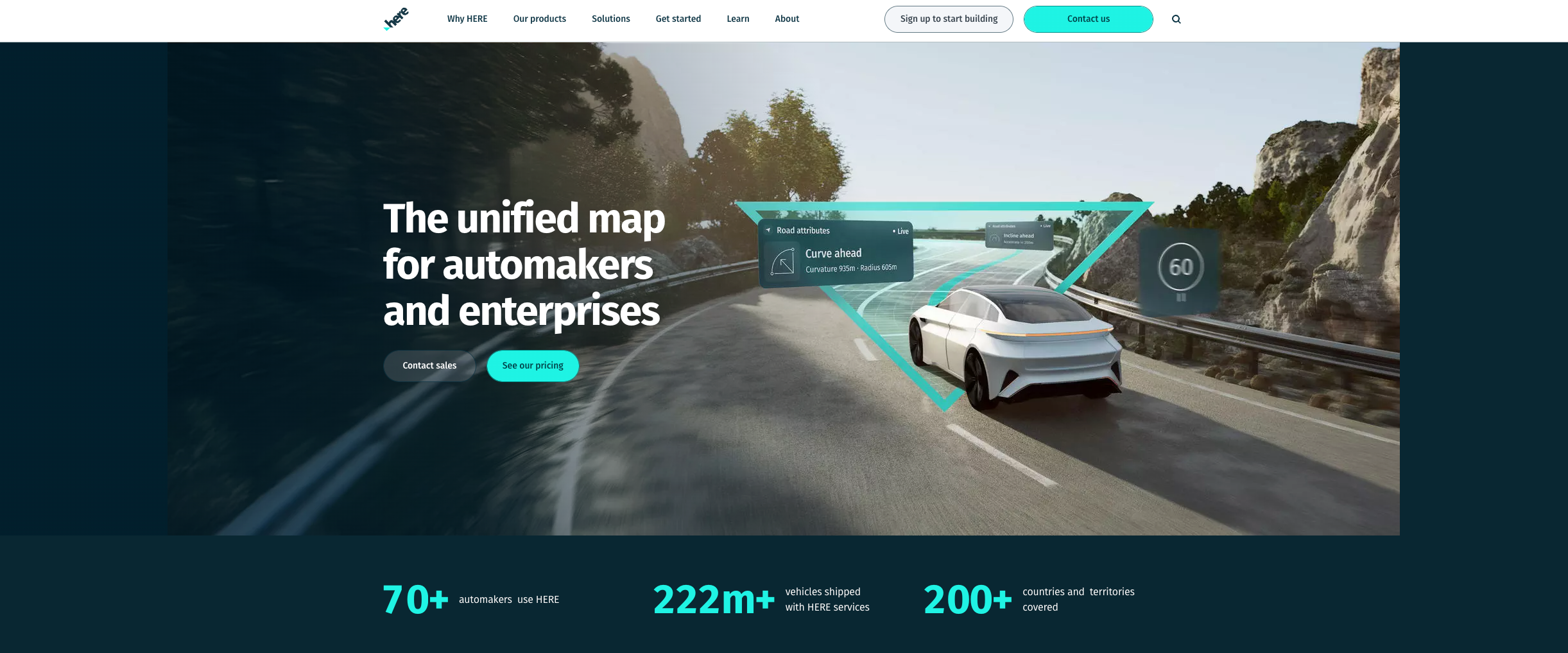
TomTom: TomTom provides high-quality maps, routing, and real-time traffic information through its mapping platform. The company utilizes “super sources” technology, which combines professional mapping with sensor data from connected vehicles and other sources, including probe data, GPS measurements, and mobile sensors.
Their coverage varies depending on the country, and implementing their data can be difficult outside of their main navigation product.
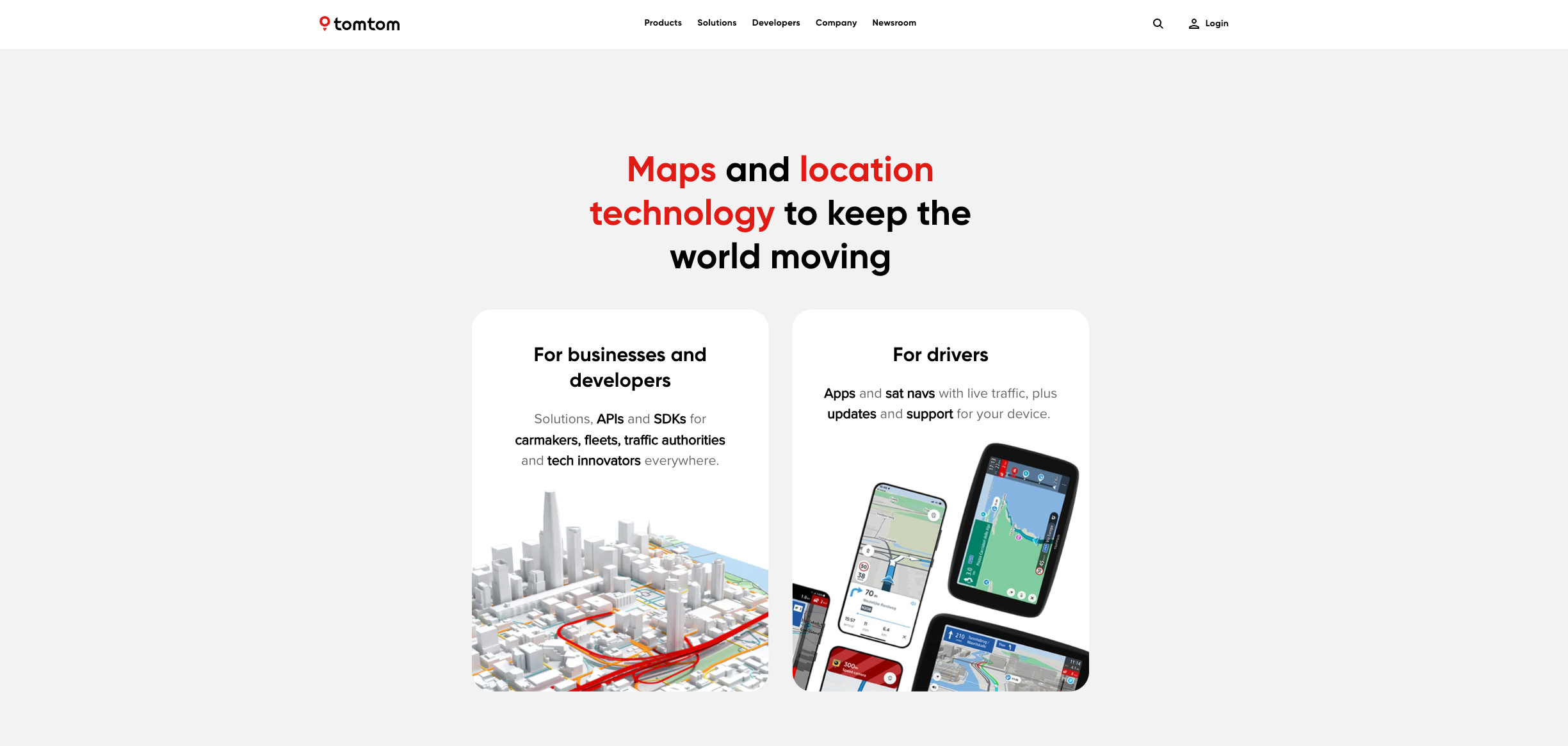
SafeGraph: SafeGraph focuses on providing detailed Points of Interest (POI) data. The platform offers insights into consumer behavior, foot traffic patterns, and business location analytics, particularly strong in the United States market.
The main limitation is its geographic focus, primarily on North America, with less comprehensive coverage in other regions. This is a good option for retail site selection and market analysis, commercial real estate evaluation, consumer behavior research, and competitive intelligence.
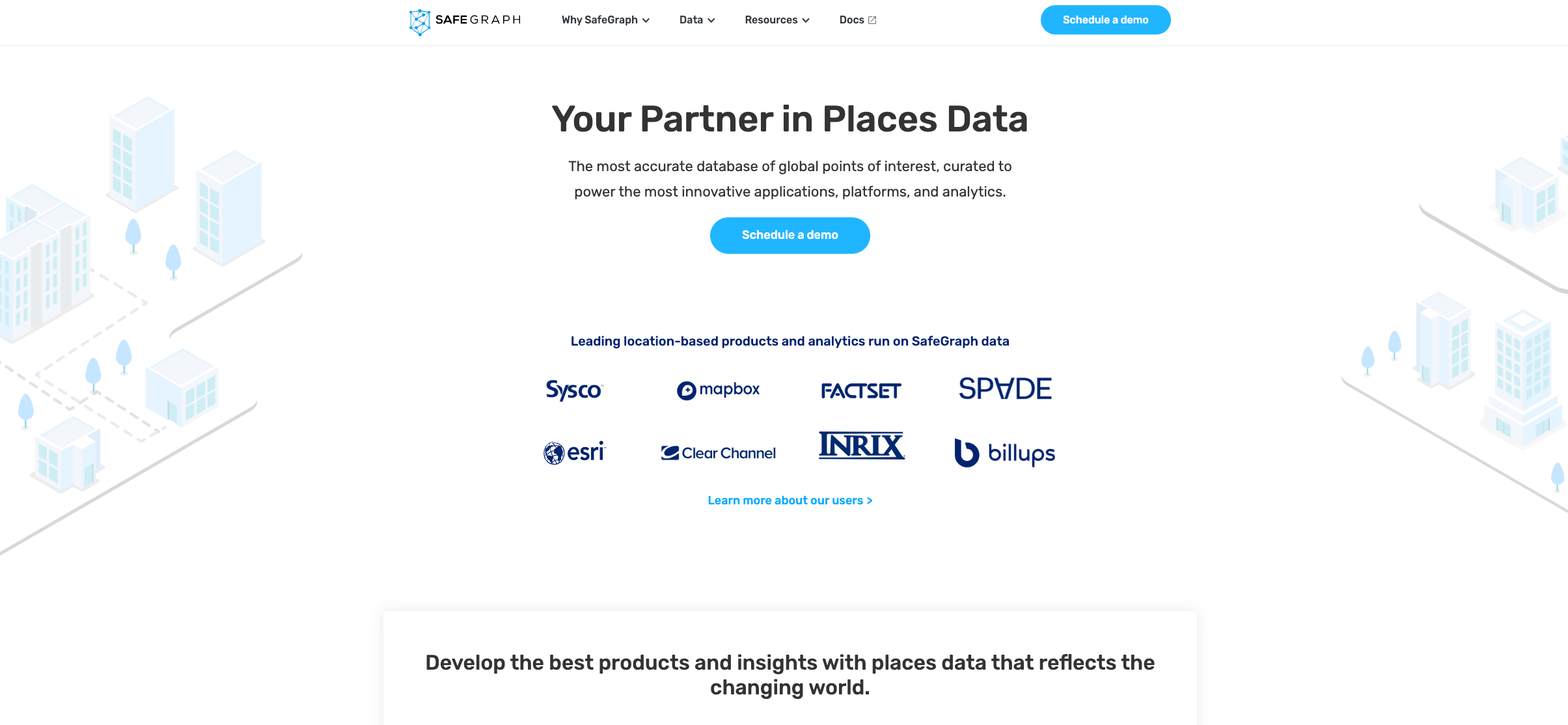
Open Source Options
When seeking open-source alternatives to OpenStreetMap’s data, it’s important to distinguish between actual data alternatives and complementary tools that are often mistaken for alternatives.
Open Source Data Alternatives:
GeoNames: A comprehensive geographical database containing over 12 million place names and geographic features worldwide. It provides structured data about countries, cities, postal codes, and administrative divisions, making it particularly valuable for toponyms and basic geographic reference applications.
GeoNames excels in worldwide coverage of place names and alternative names at a low cost, making it suitable for projects that don’t require frequent updates. However, it suffers from partial postal code coverage with significant gaps, outdated data in many regions, varying coordinate quality, and a simplified data format that may not meet complex business requirements.

Overture Maps: A collaborative initiative backed by major tech companies that provides high-quality, interoperable map data. Overture focuses on delivering structured, standardized geospatial datasets including places, buildings, transportation networks, and administrative boundaries.
The platform offers impressive global coverage, regular updates, and comprehensive documentation, making it ideal for building map services and location-based applications. However, its strong reliance on OSM as a source, doesn’t make it a serious alternative if you already experience issues with OSM.
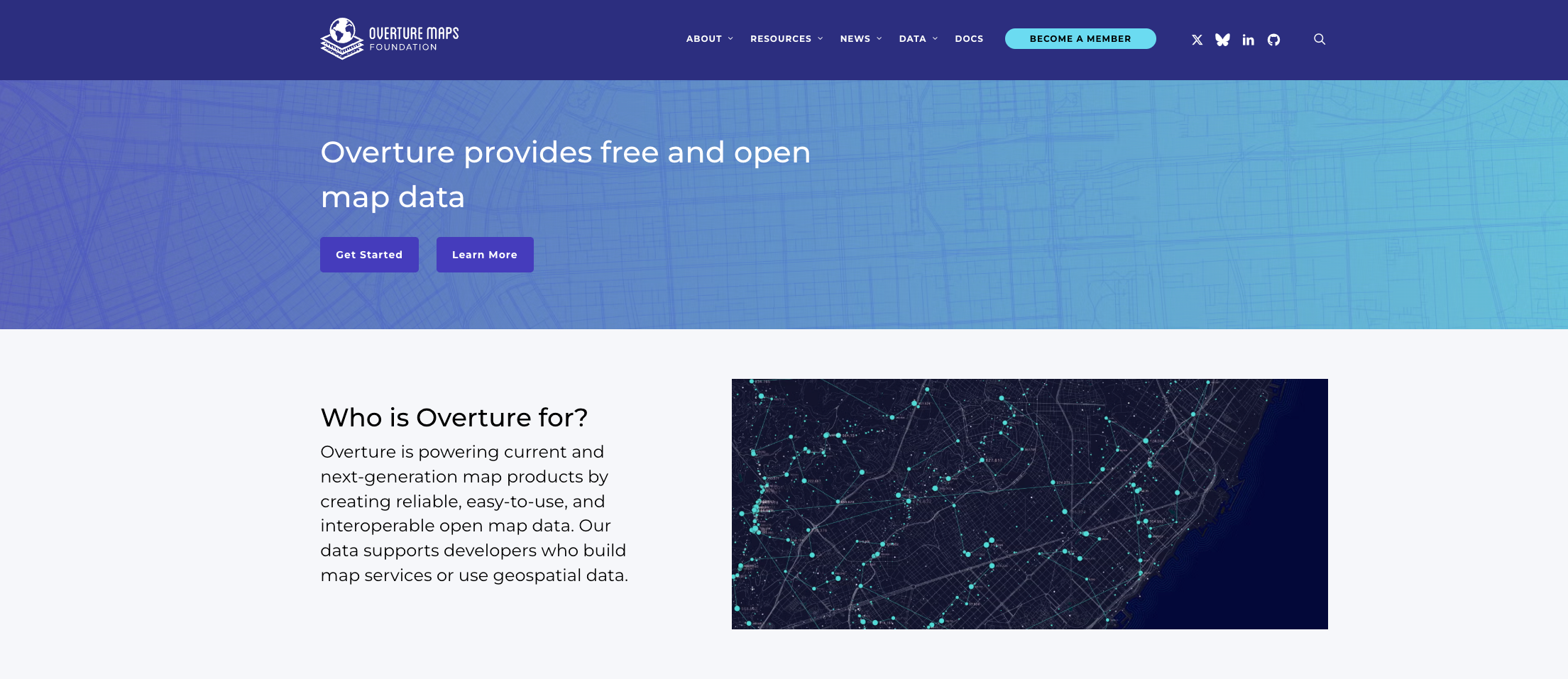
Open Addresses: A global initiative that aggregates address data from open government sources and other public datasets. It’s useful for address validation, geocoding, and applications requiring comprehensive address coverage in regions where official address data is publicly available.
It works well for address validation and geocoding in specific countries with strong open data initiatives and transparent government address databases. However, coverage is limited to select countries with available government data, and geographic coverage remains inconsistent.
Additionally, because the project receives funding from geocoding service providers, these sponsors may prioritize certain regions or data types that benefit their own services, making it unsuitable for global applications that require uniform address quality.

Complementary Tools:
Leaflet: A JavaScript library for creating interactive maps that can display data from various sources, including OpenStreetMap. It’s a visualization tool that complments data sources rather than replacing them.
Leaflet excels in creating responsive, mobile-friendly interactive maps with customizable styling and plugin support, making it ideal for web developers building location-based applications and prototypes. However, it requires external data sources, has limited built-in features compared to commercial platforms, relies on third-party plugins for advanced functionality, and requires JavaScript programming knowledge for implementation.
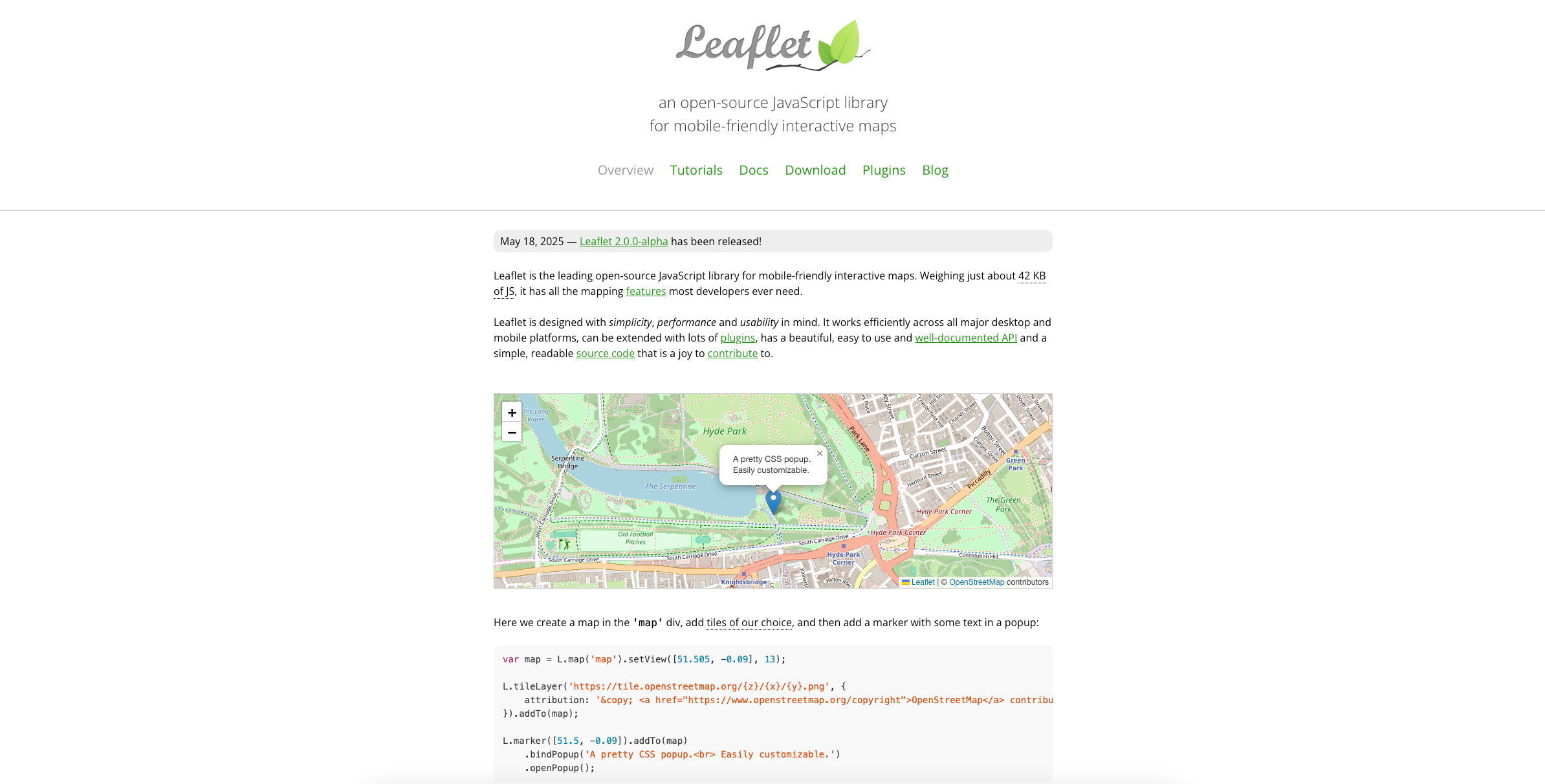
QGIS: Similarly, QGIS is an open-source Geographic Information System for analyzing and interpreting spatial data from multiple sources. Instead of a data alternative, it’s a powerful tool for working with OpenStreetMap data and other geospatial datasets.
QGIS is excellent for GIS professionals and organizations needing advanced spatial analysis and map creation without commercial software costs, particularly suitable for academic and government sectors. However, it has a steep learning curve requiring technical expertise, is resource-intensive for large datasets, and lacks the’ polished interfaces of commercial alternatives.
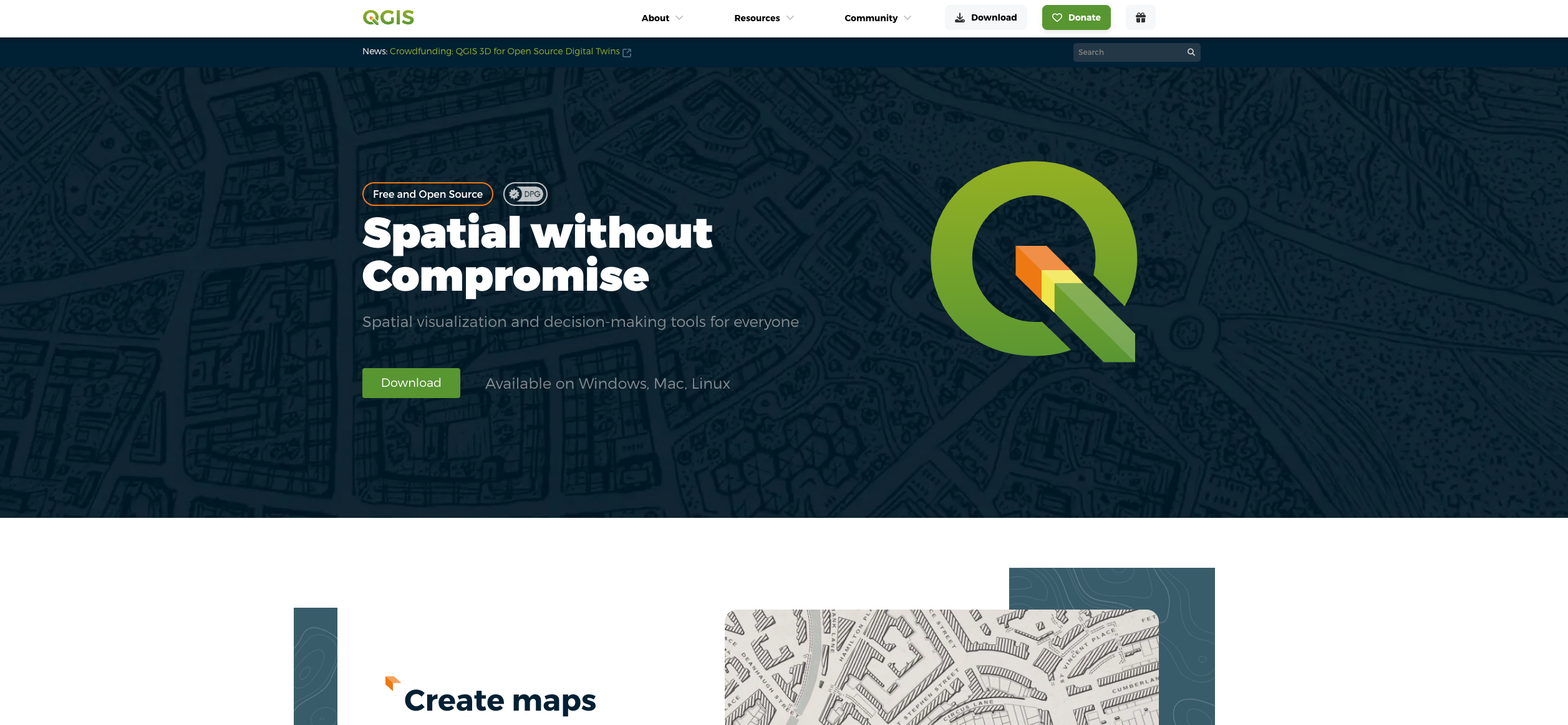
These complementary tools are valuable for processing and visualizing geospatial data, but require underlying data sources to function effectively.
Key Considerations When Choosing OSM Alternatives
Data Accuracy, Timeliness, and Completeness: Evaluate the data quality and consistency across your target countries, and assess whether the provider offers robust data validation processes. Consider the update frequency and how quickly changes in the real world are reflected in the database.
Documentation & Support: Assess the level of technical documentation, API references, and customer support available for implementation and troubleshooting. Community-driven projects rely on forums and collaborative support; some commercial providers offer access to documentation only, while others provide full, dedicated technical assistance.
Delivery Model: Consider whether you want an API access or a self-hosted database. While APIs offer real-time access and easy implementation, self-hosted solutions provide better control over data processing and security. It can also be more cost-effective for high-volume usage, although it requires more technical expertise to implement.
Data Structure: Examine how consistently data is formatted across different regions and whether the level of standardization meets your application requirements. OSM’s crowdsourcing approach can lead to inconsistencies that necessitate significant normalization efforts.
Licencing: Use OSM only if you are fine with their Creative Commons Attribution license, which concretely means crediting OSM in your application.
Cost: Be mindful of the total cost of ownership, and select the right provider according to your budget. While open-source data is free to use, you need to consider the costs associated with using it, which may ultimately be higher than those of some commercial providers offering custom datasets and implementation support. While an API is faster to implement and cheaper for low volumes, self-hosted solutions may have higher implementation costs, but they offer predictable costs.
Conclusion and Future Directions
In conclusion, OpenStreetMap is a valuable resource for mapping solutions, offering free and editable map data. The collaborative project has created an impressive dataset – “The Wikipedia of maps,” as Steve Coast says – that continues to grow through community contributions and innovative data sourcing approaches.
However, it has clear limitations for business use that can be solved using the right alternative, depending on your needs. In particular, business applications often require consistent quality, standardized formats, and expert support, which they will find with reliable enterprise providers.
For more than 15 years, GeoPostcodes has offered enterprise-grade postal code databases from over 1,500 official sources worldwide. Our standardized, accurate location data eliminates the quality concerns and processing overhead associated with OpenStreetMap implementations. Browse our databases for free or request a quote to discover why Fortune 500 businesses choose GeoPostcodes instead of OpenStreetMap.
FAQ
What is better than OpenStreetMap?
Commercial open street map alternative solutions, such as GeoPostcodes, offer verified geospatial data in standardized formats, providing better control and accuracy for enterprise applications that require reliable geographic coordinates.
What is the open-source alternative to Street View?
OpenStreetMap community contributors can define and explore street-level imagery by integrating platforms, although no direct equivalent exists as a default open-source alternative to Street View.
Is Mapbox better than OpenStreetMap?
Mapbox provides commercial geospatial data with enhanced control and support, while OpenStreetMap data remains free. The answer depends on specific categories of use cases and requirements.
How do technical challenges with OpenStreetMap API implementation compare to commercial alternatives?
When developing an app using the OpenStreetMap API, developers often encounter complex technical hurdles. For example, implementing vector tiles requires significant programming expertise, and connection issues can interrupt data flow. Many developers report spending considerable time completing integration tasks, only to receive cryptic error messages, such as “verification successful, waiting,” or technical errors with a ray ID that requires human intervention to resolve. While OpenStreetMap remains a valuable open-source project, the technical complexity of implementing it often leads businesses to contact commercial providers who can respond quickly to integration challenges and generate reliable solutions without incurring extensive technical overhead.
What should businesses review when choosing mapping solutions?
For example, the license requirements vary significantly between providers, and businesses must review each option carefully. OpenStreetMap operates under a Creative Commons license that requires attribution, while commercial solutions typically offer more flexible licensing terms.
Then, when it comes to data quality, Google Maps provides broad coverage but faces verification challenges and accuracy issues in many regions. The date of last update, data completeness, and standardization across different language regions are critical factors. Commercial providers like GeoPostcodes address these quality concerns by sourcing data from over 1,500 official sources, ensuring consistent accuracy without the variability commonly found in crowd-sourced projects.
How to evaluate mapping solutions for enterprise applications?
GIS professionals must consider multiple factors when selecting mapping data for enterprise use. While Google Maps and OpenStreetMap API solutions may seem cost-effective initially, the hidden costs of data verification, quality control, and ongoing maintenance often exceed expectations. For example, completing a project using inconsistent crowd-sourced data requires significant human resources for data cleaning and validation. Enterprise applications require reliable data that consistently generates accurate results without connection interruptions or verification delays. When businesses contact professional location data providers like GeoPostcodes, they receive immediate support. They can proceed with confidence, knowing the data quality eliminates the time-consuming review processes typically required with other open-source project alternatives.





